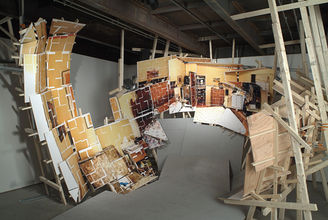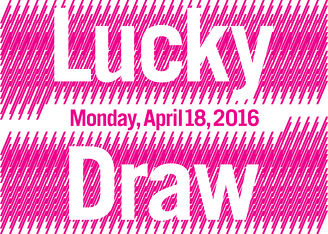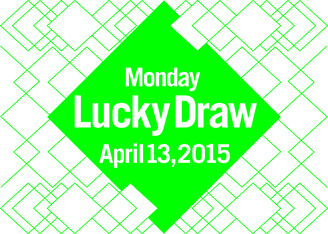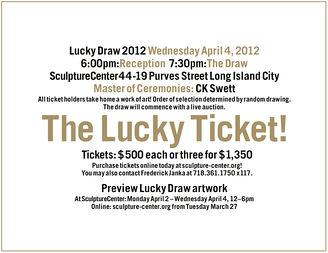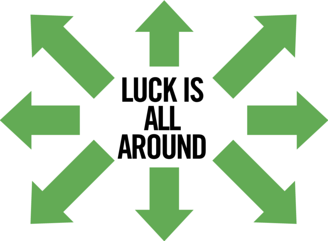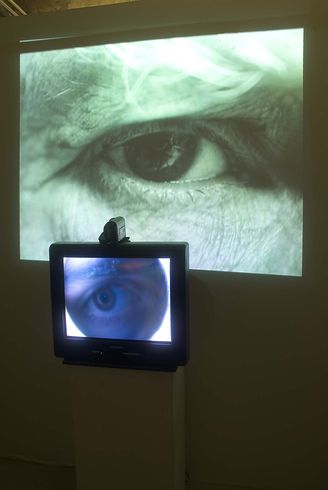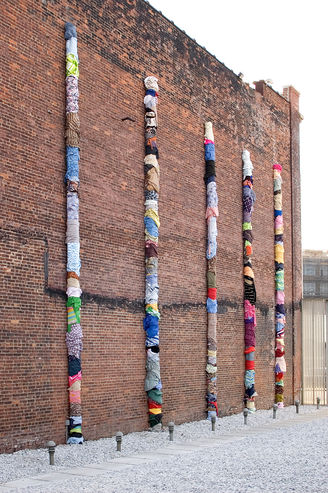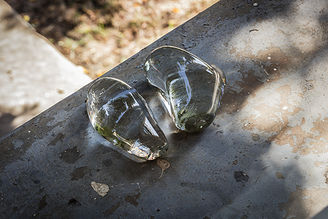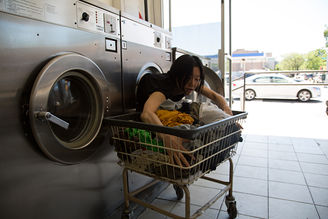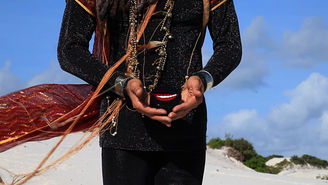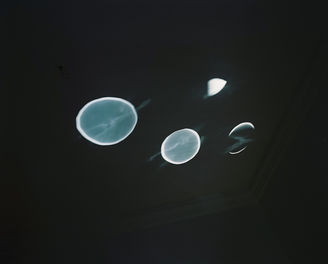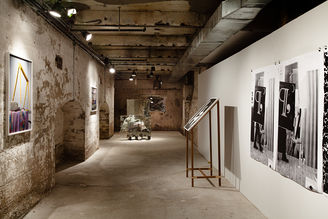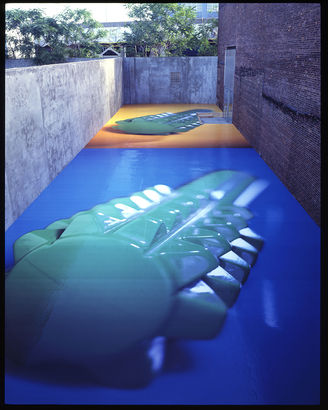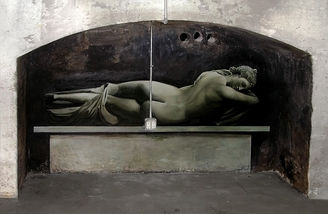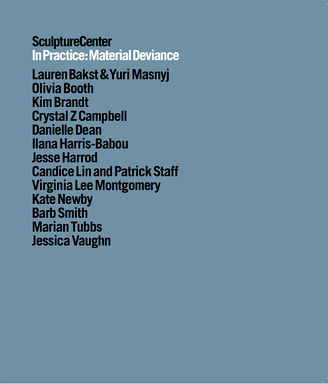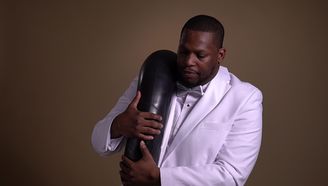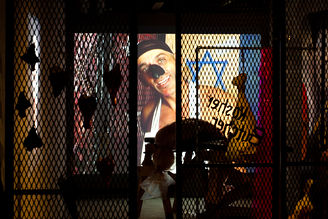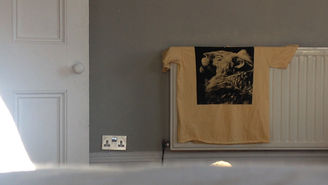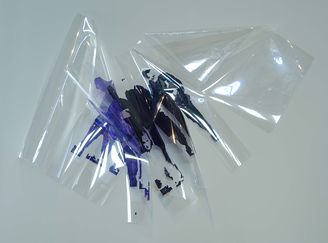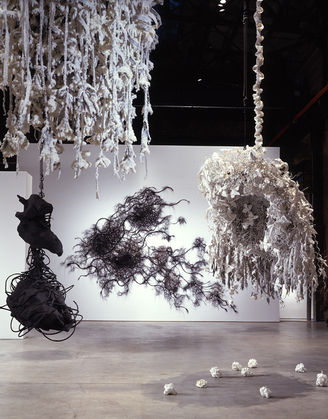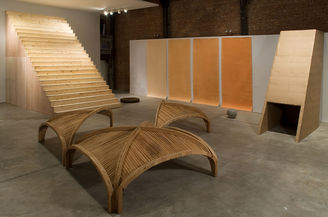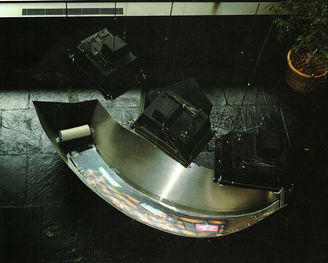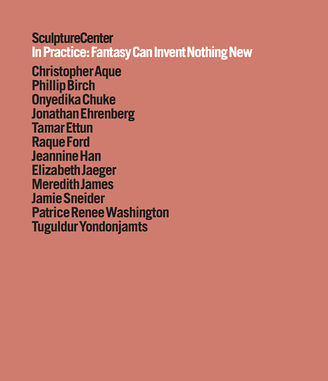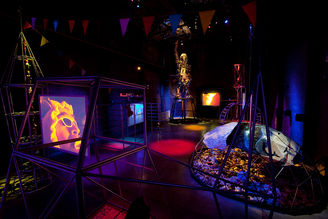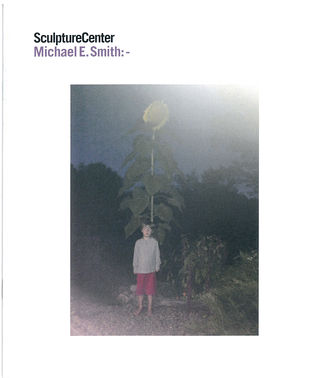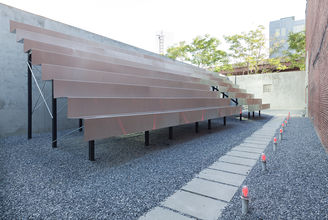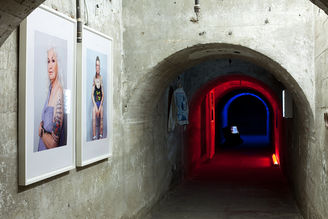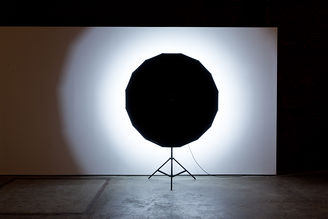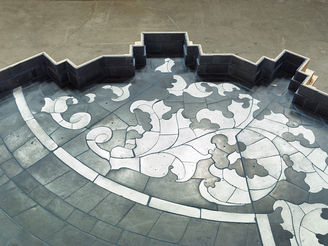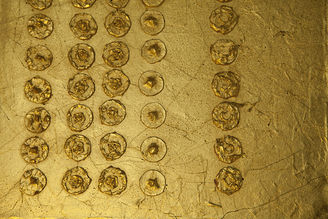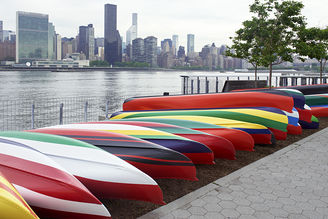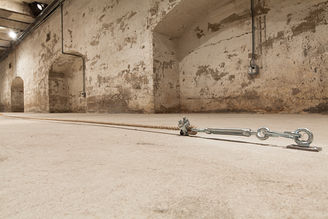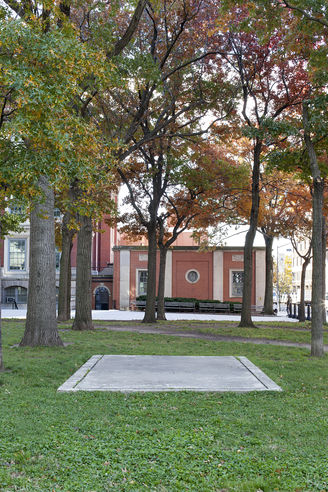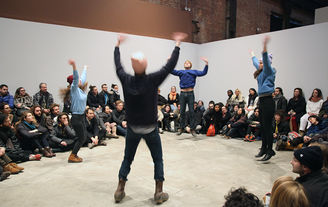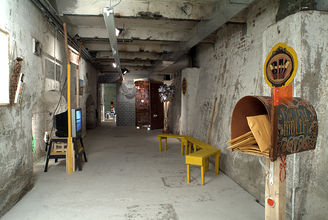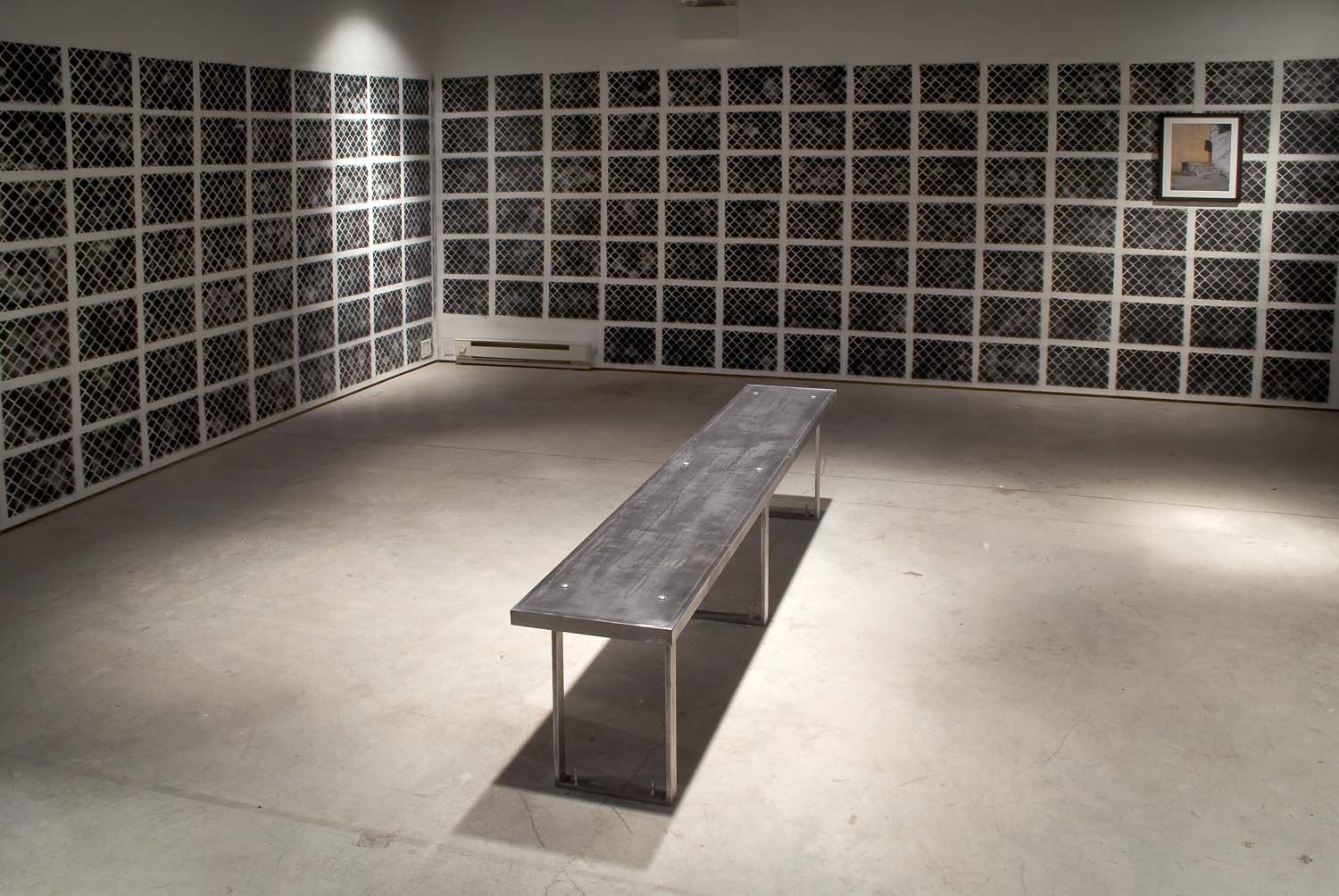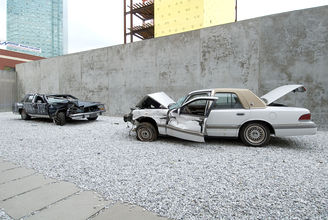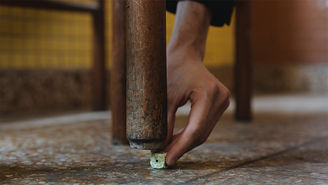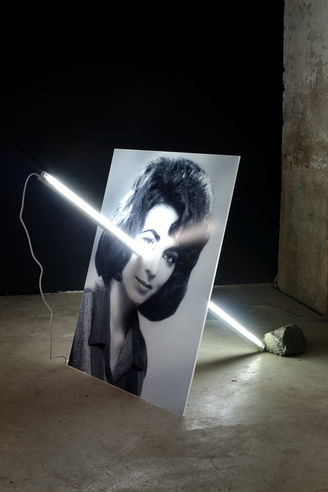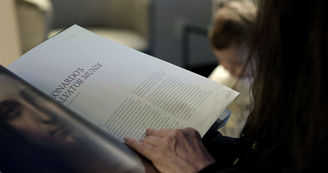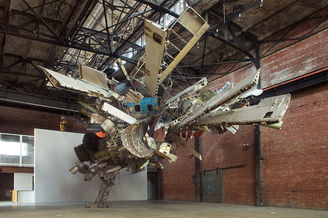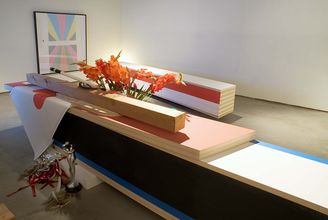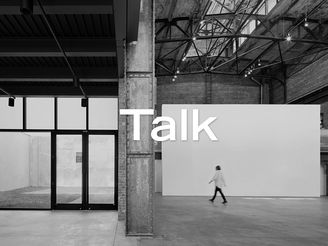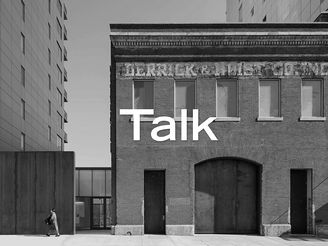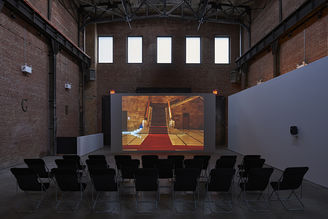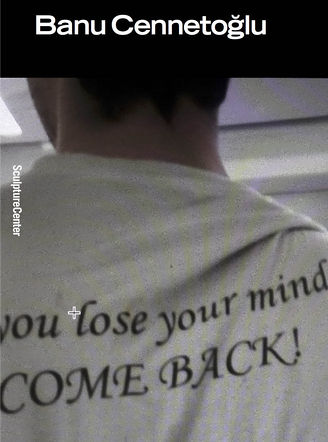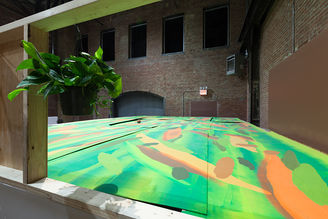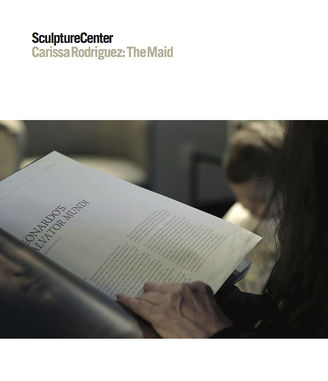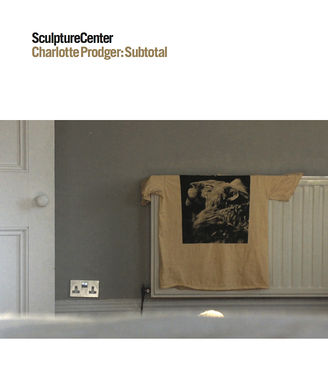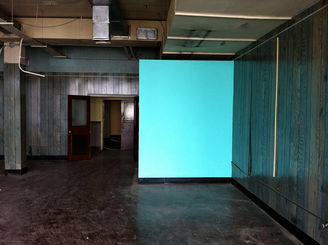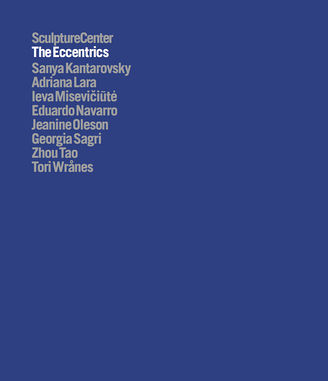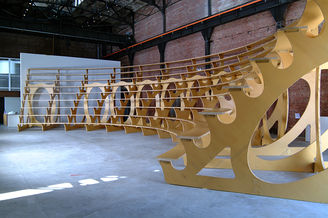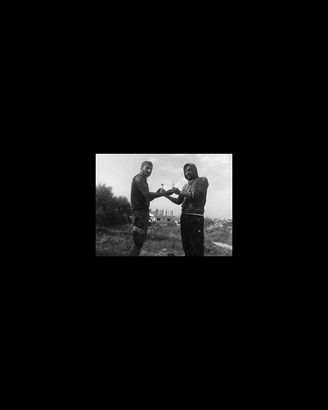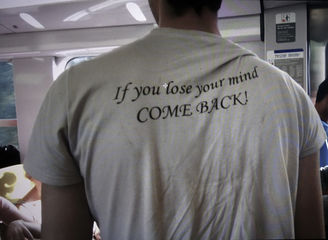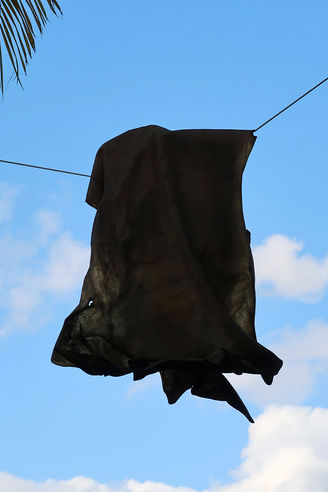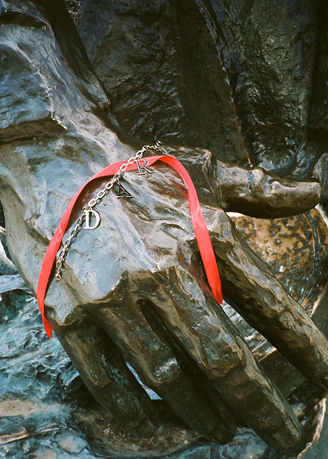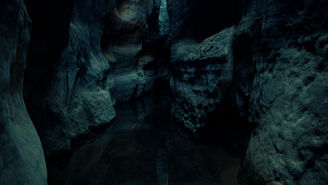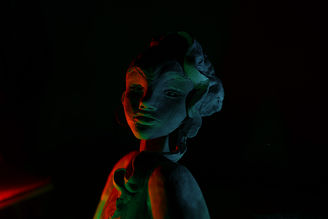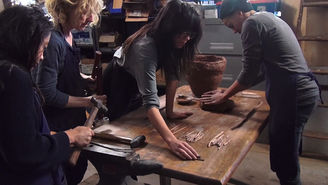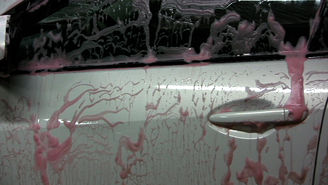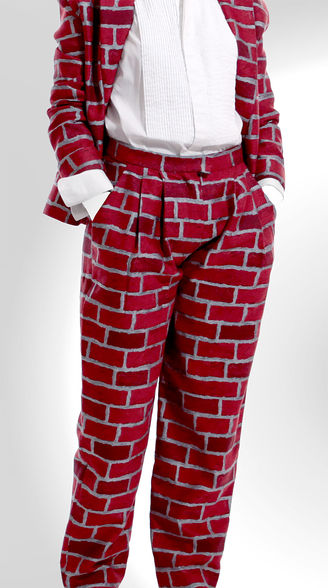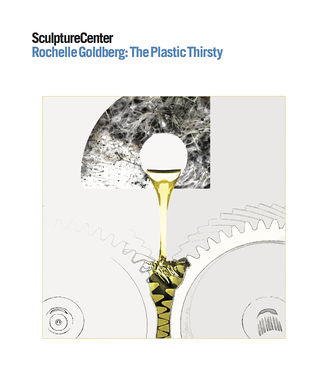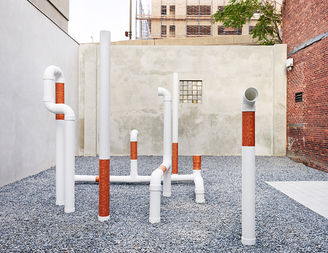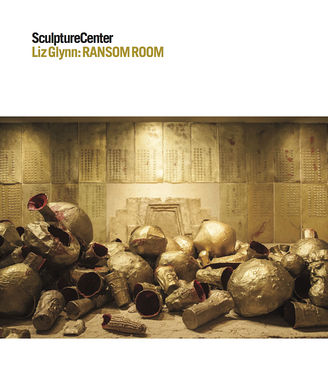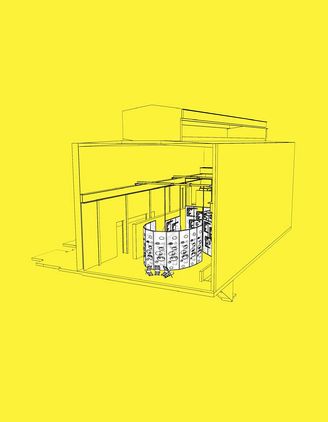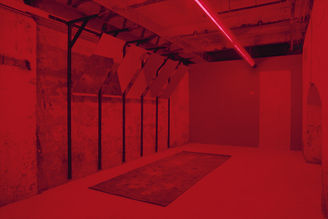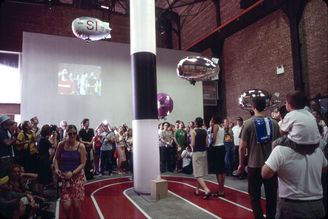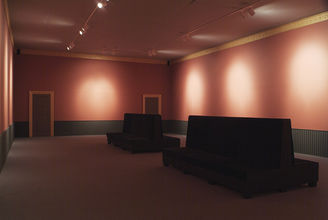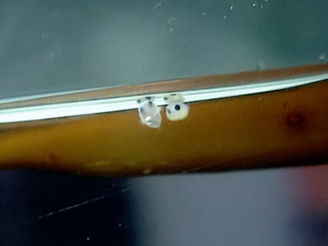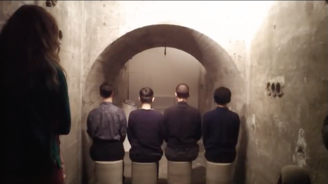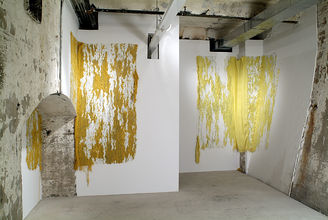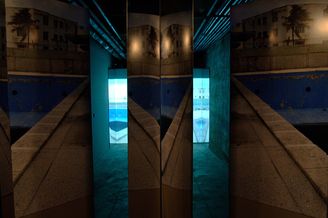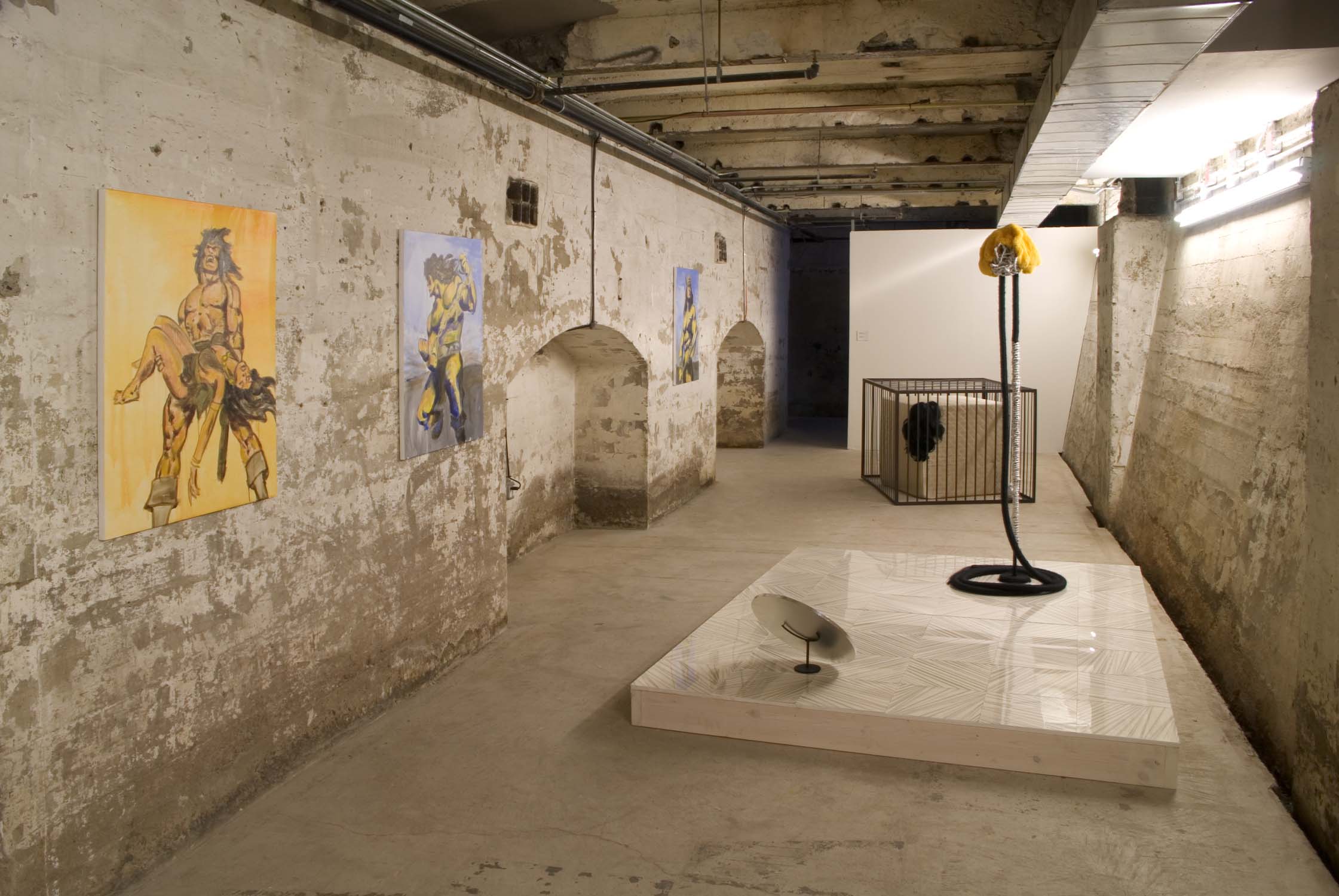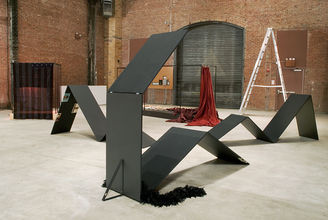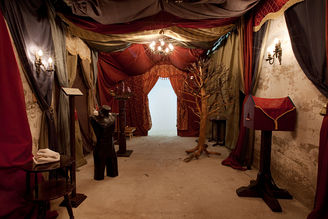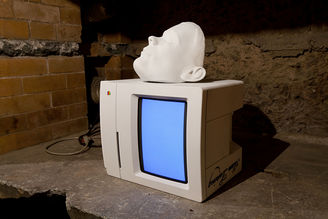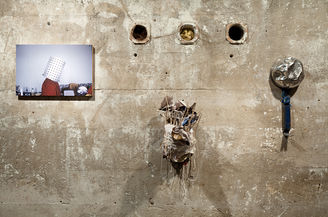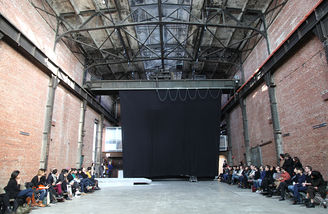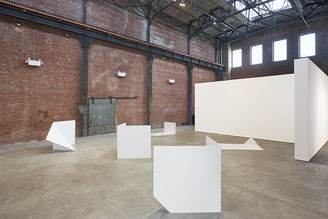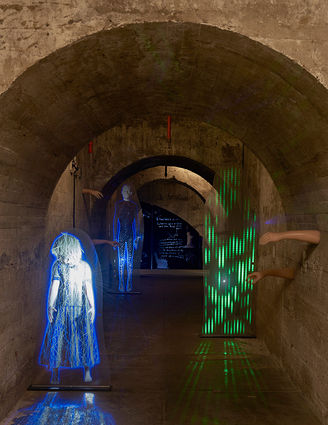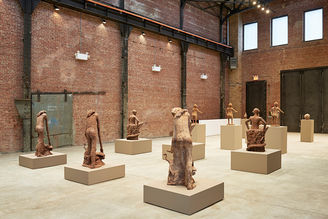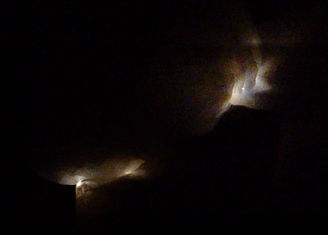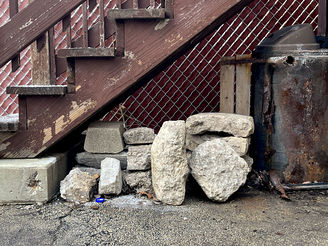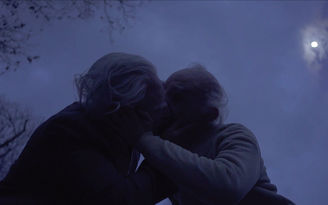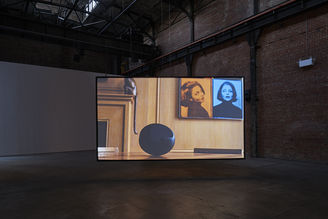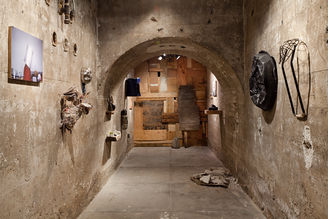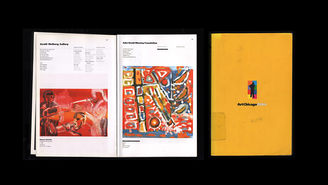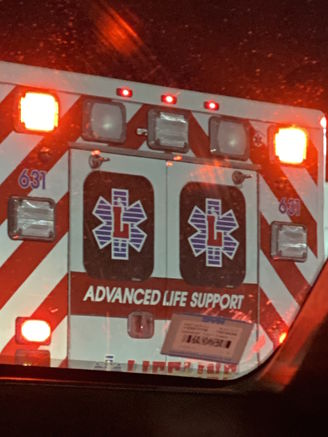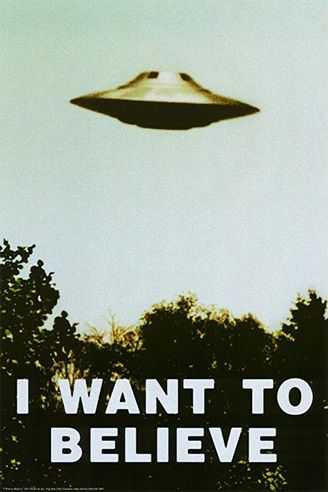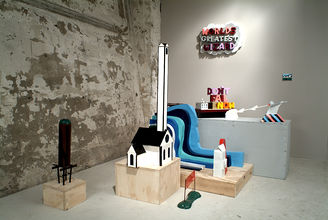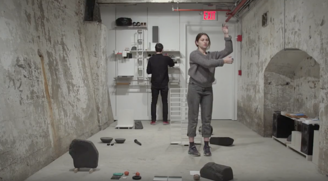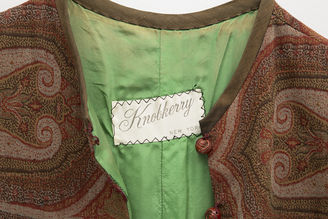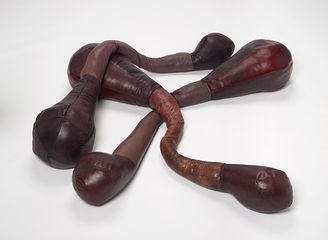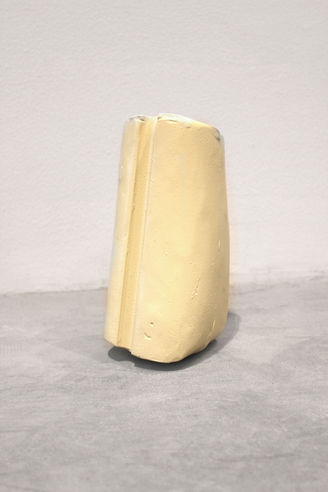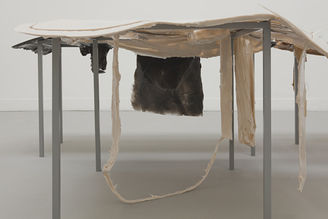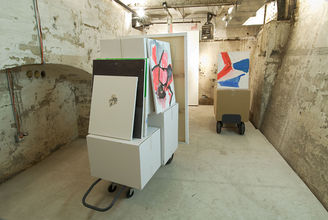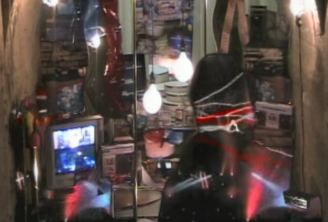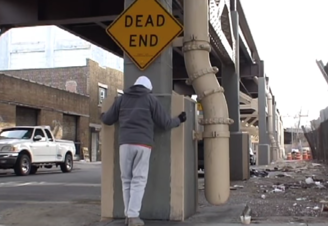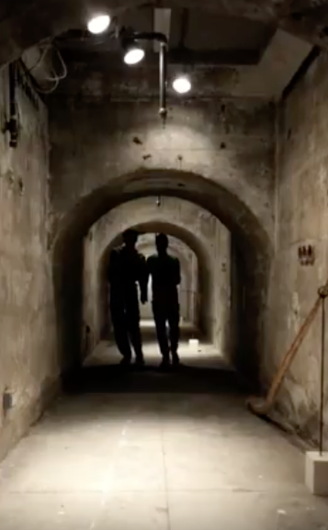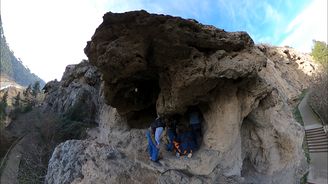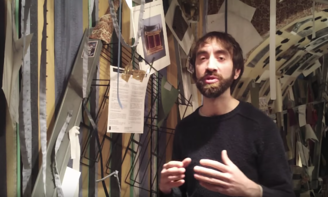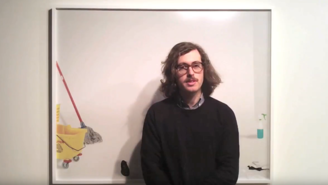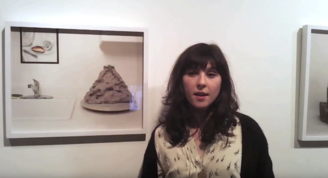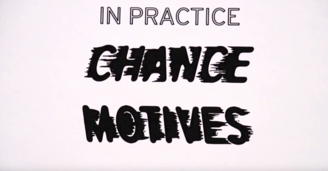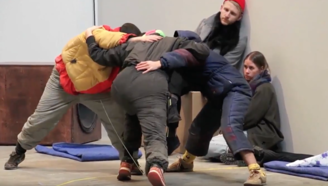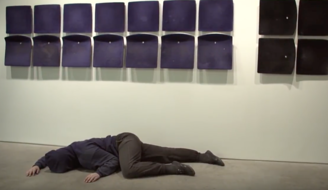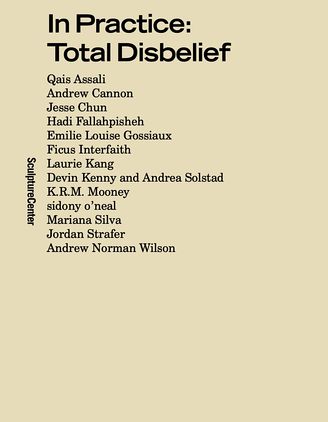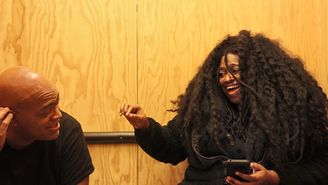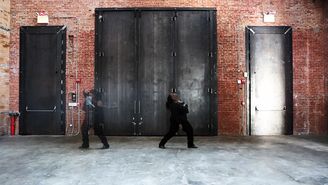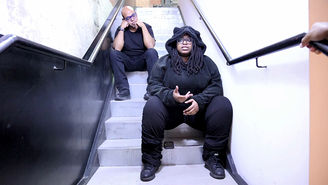In Practice Winter '04
In Practice Winter '04Jan 11–Apr 11, 2004
- Images
- Text
- Events
- Press
- Sponsors
- Related
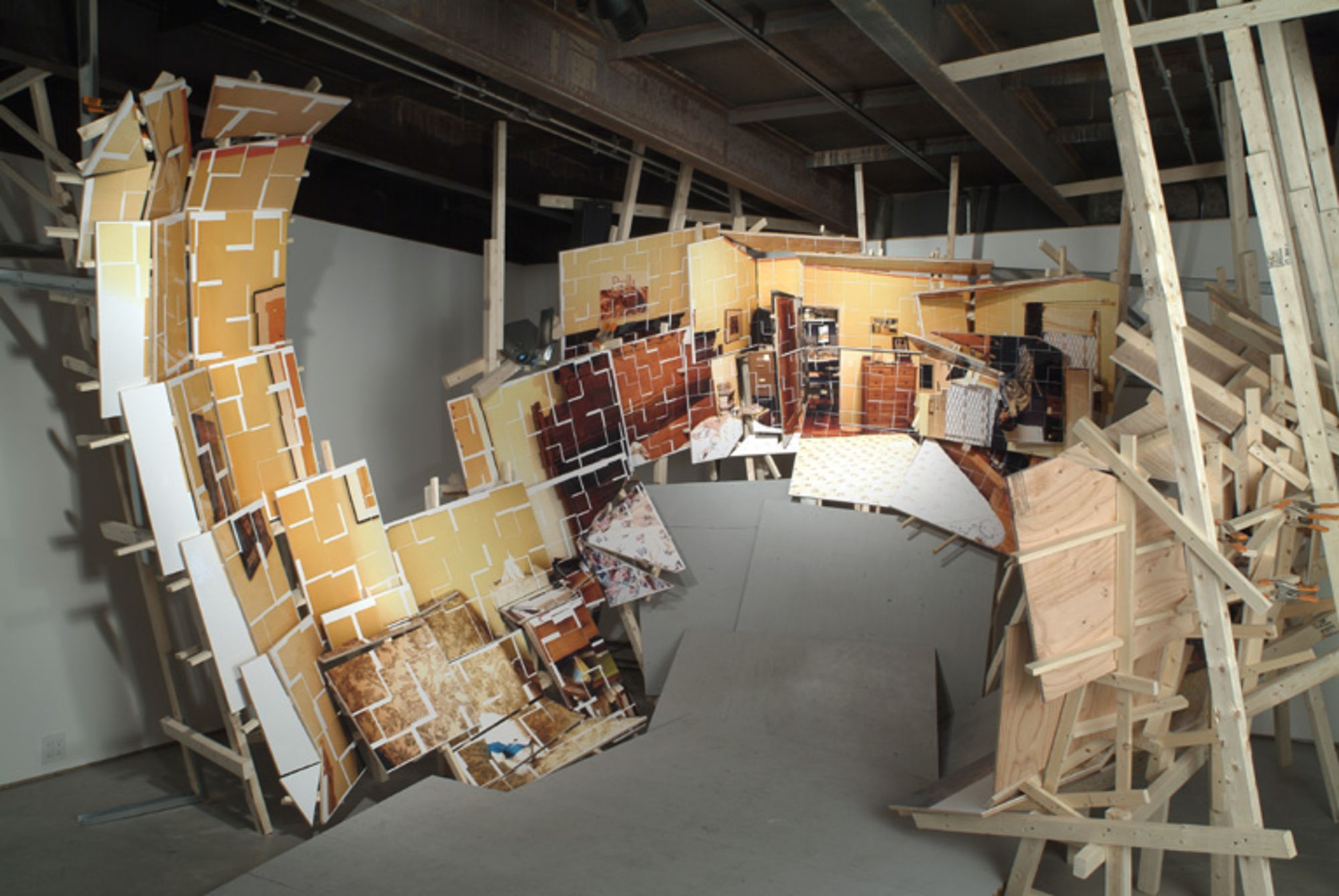
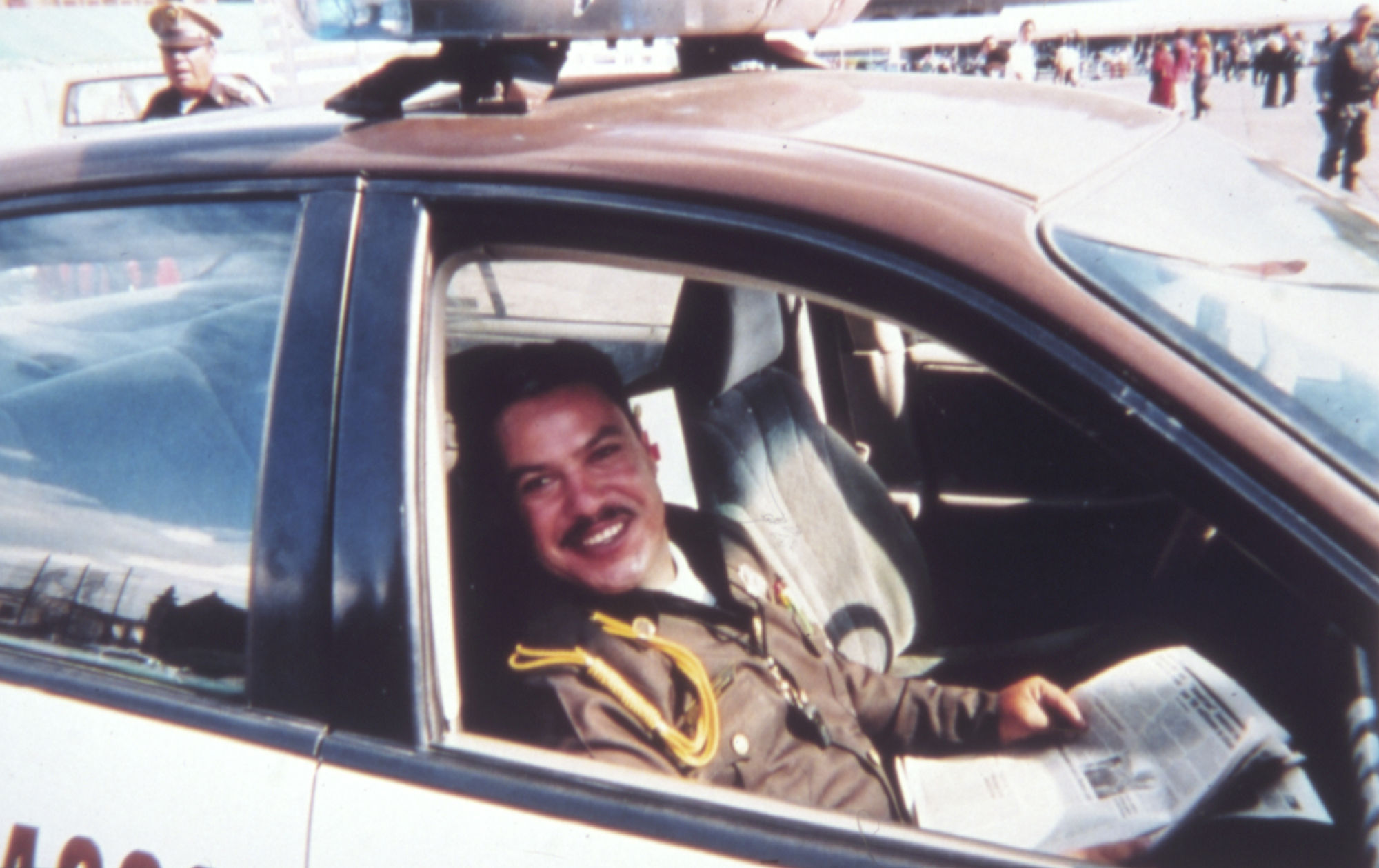
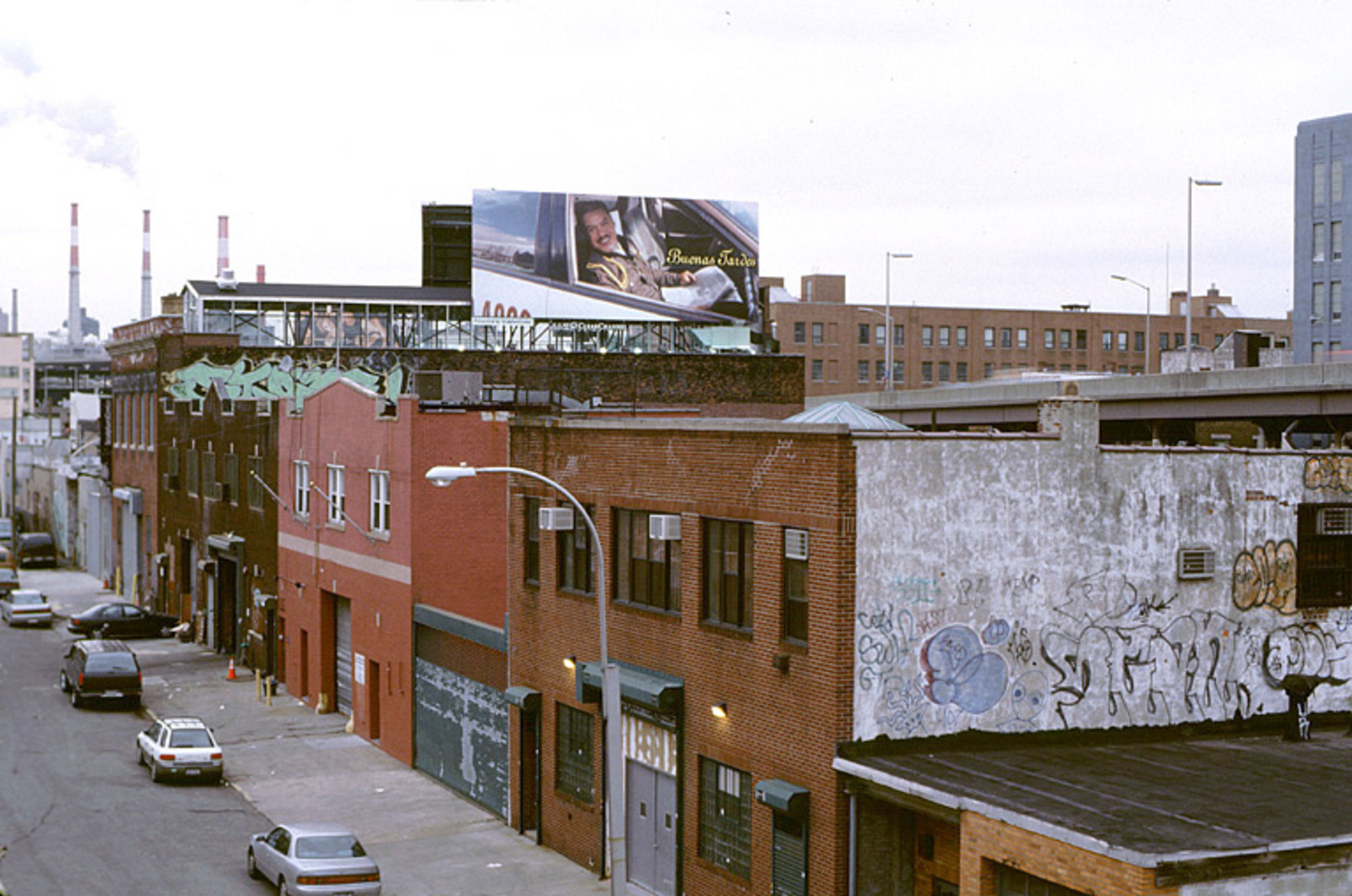
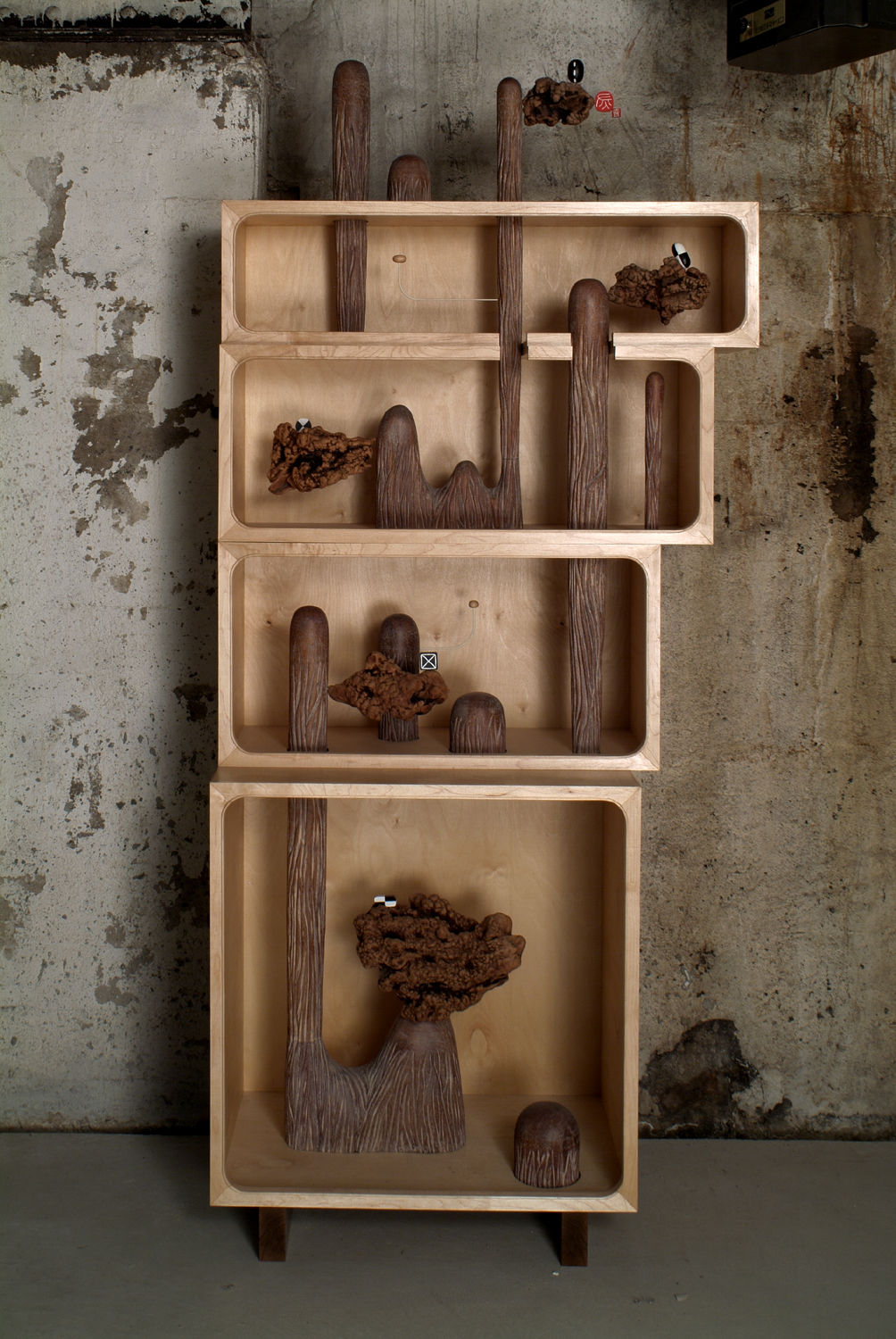
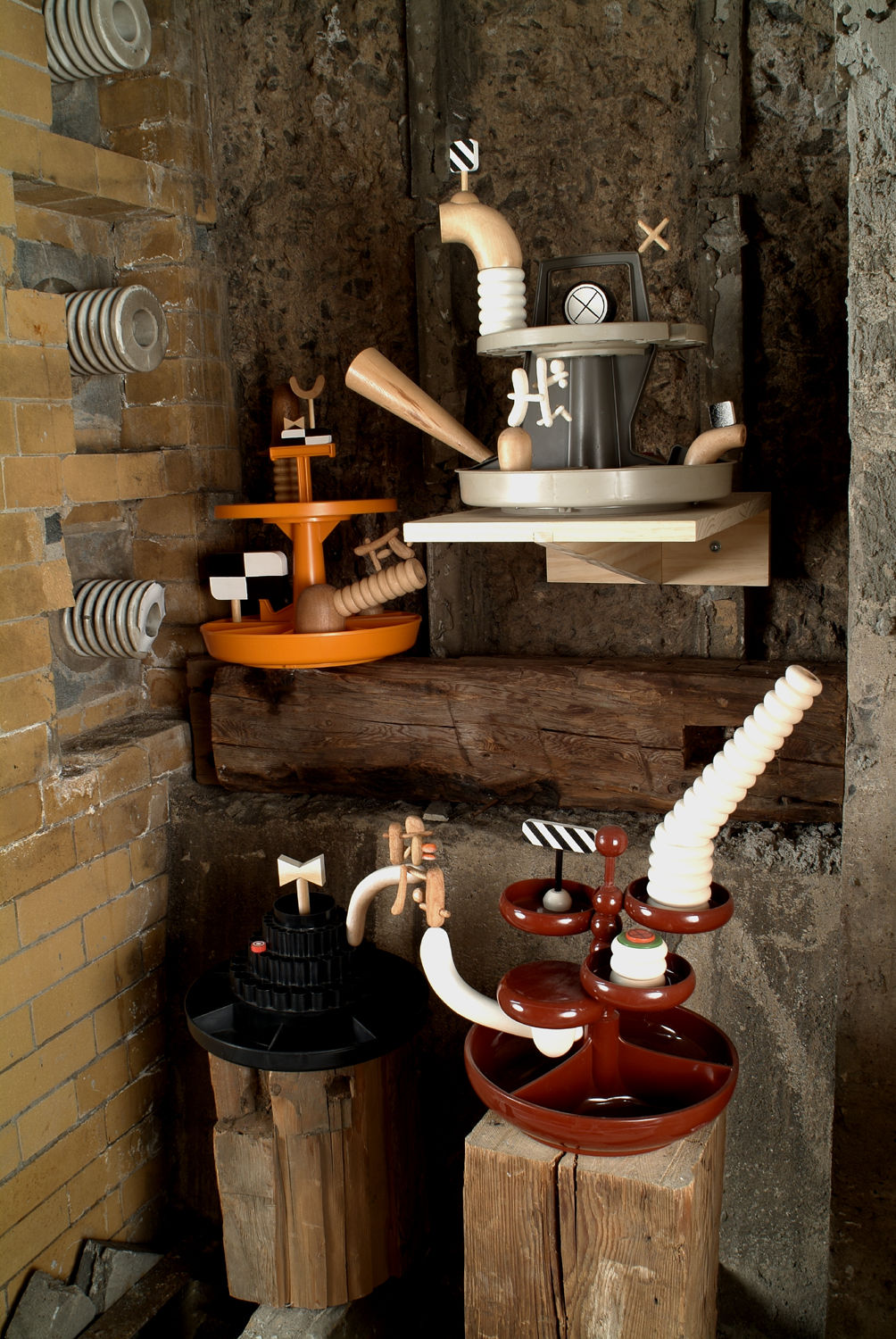
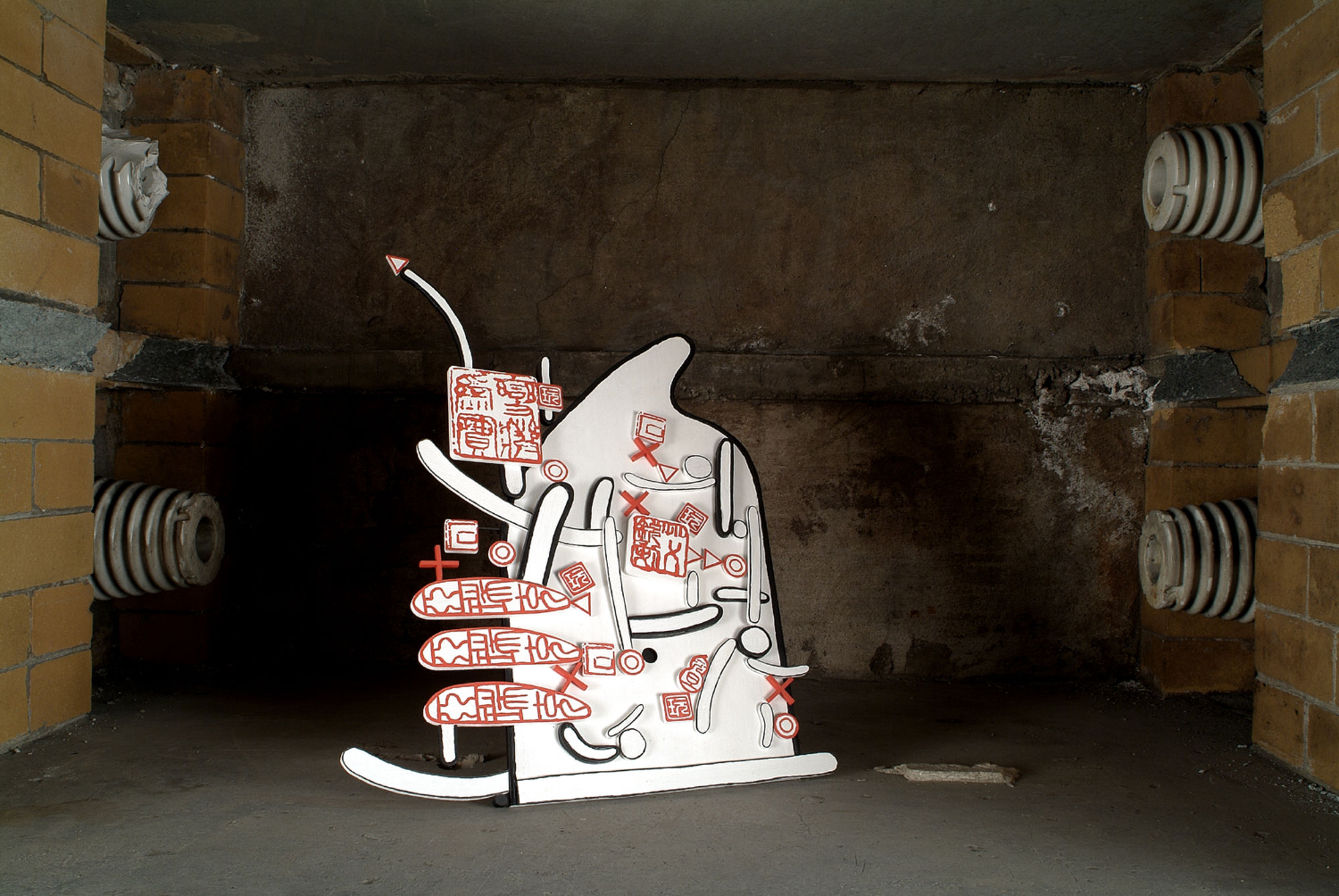
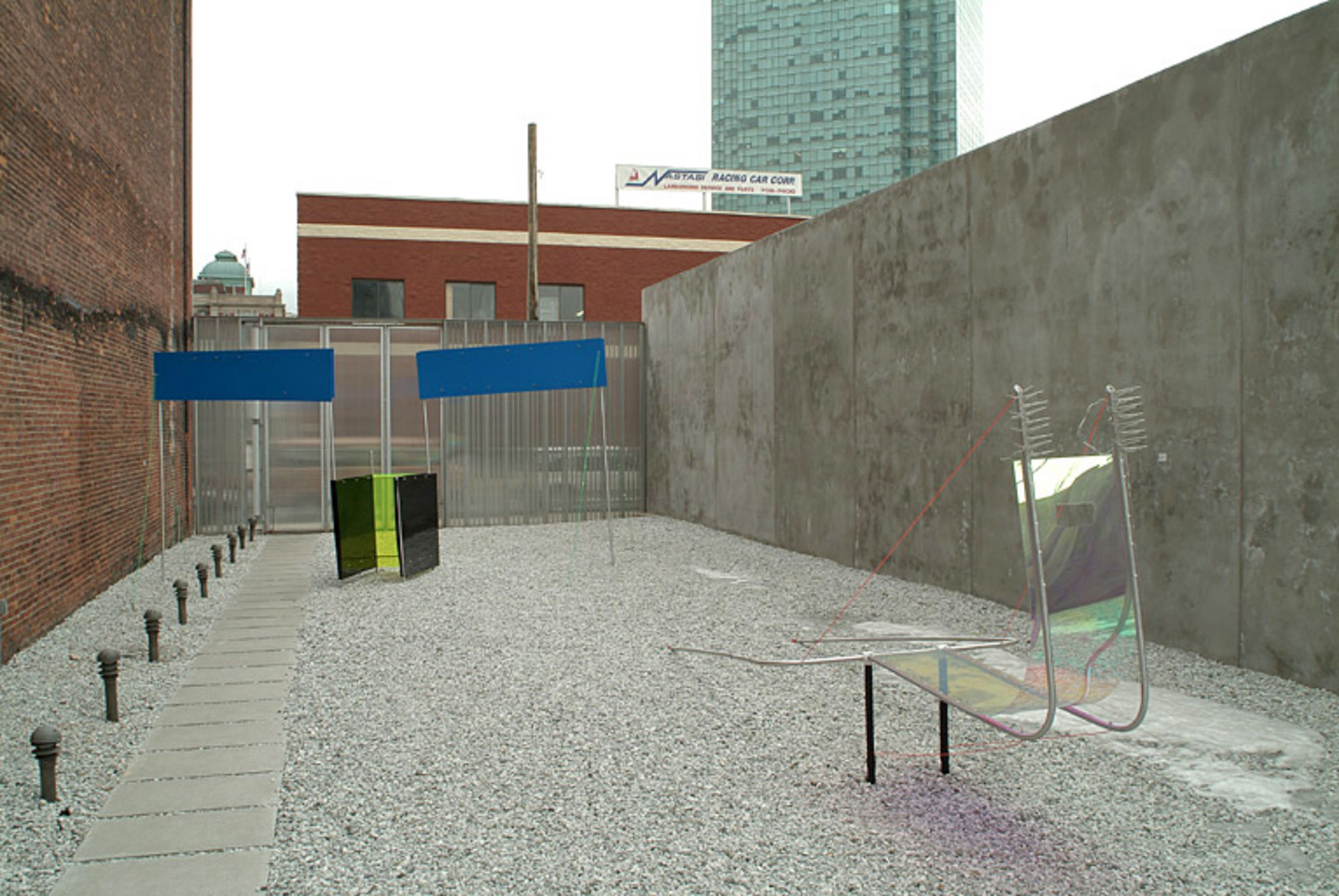
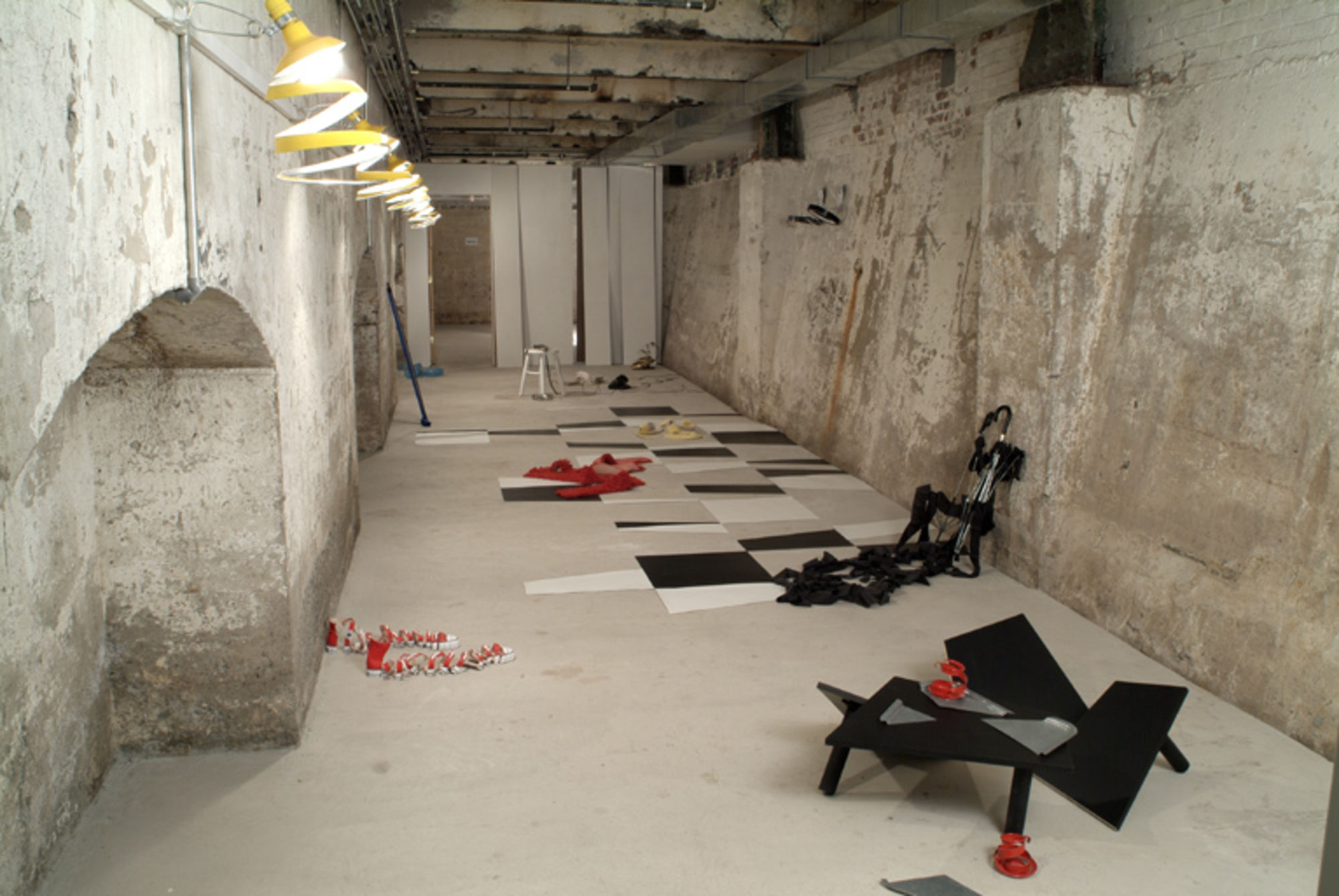
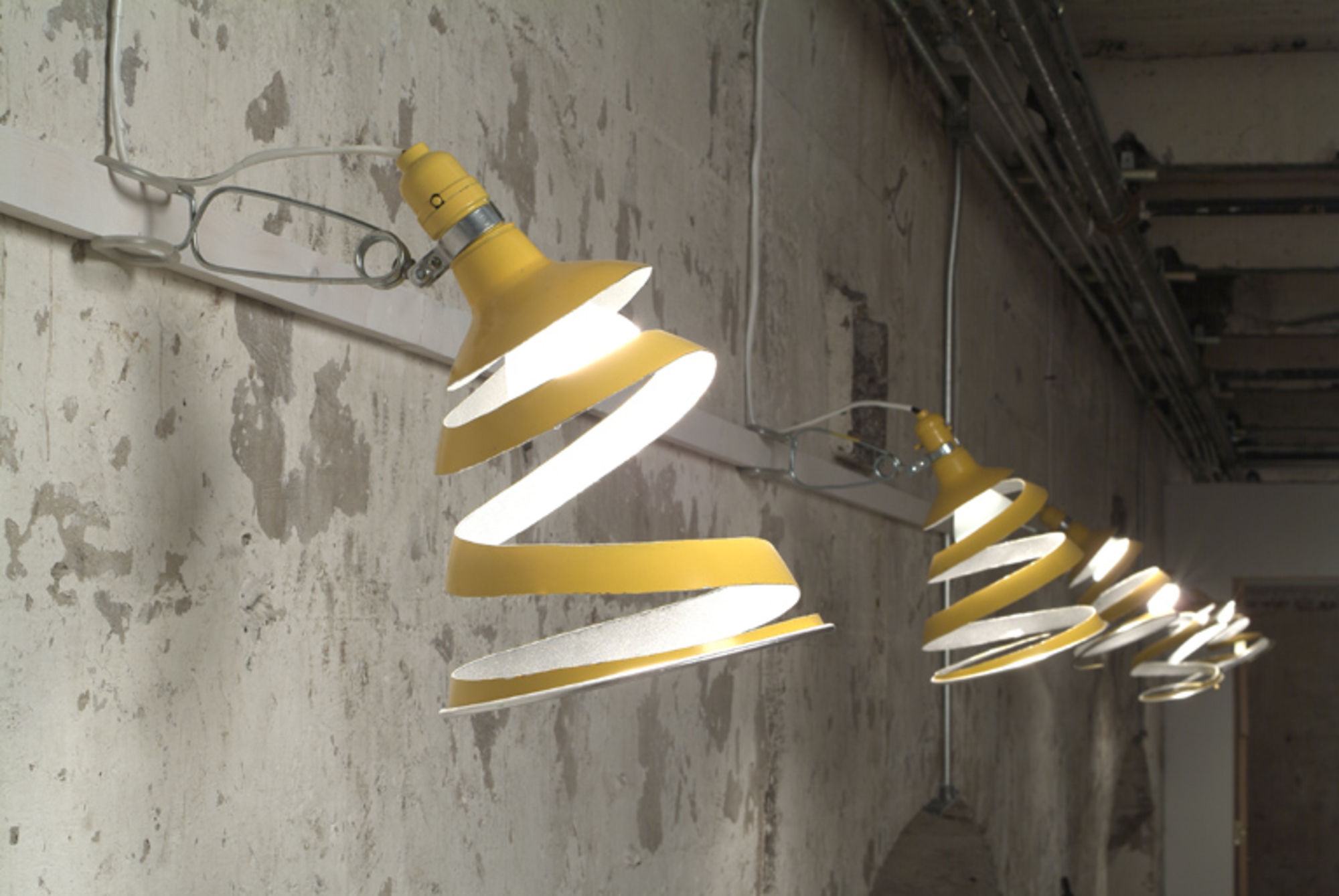
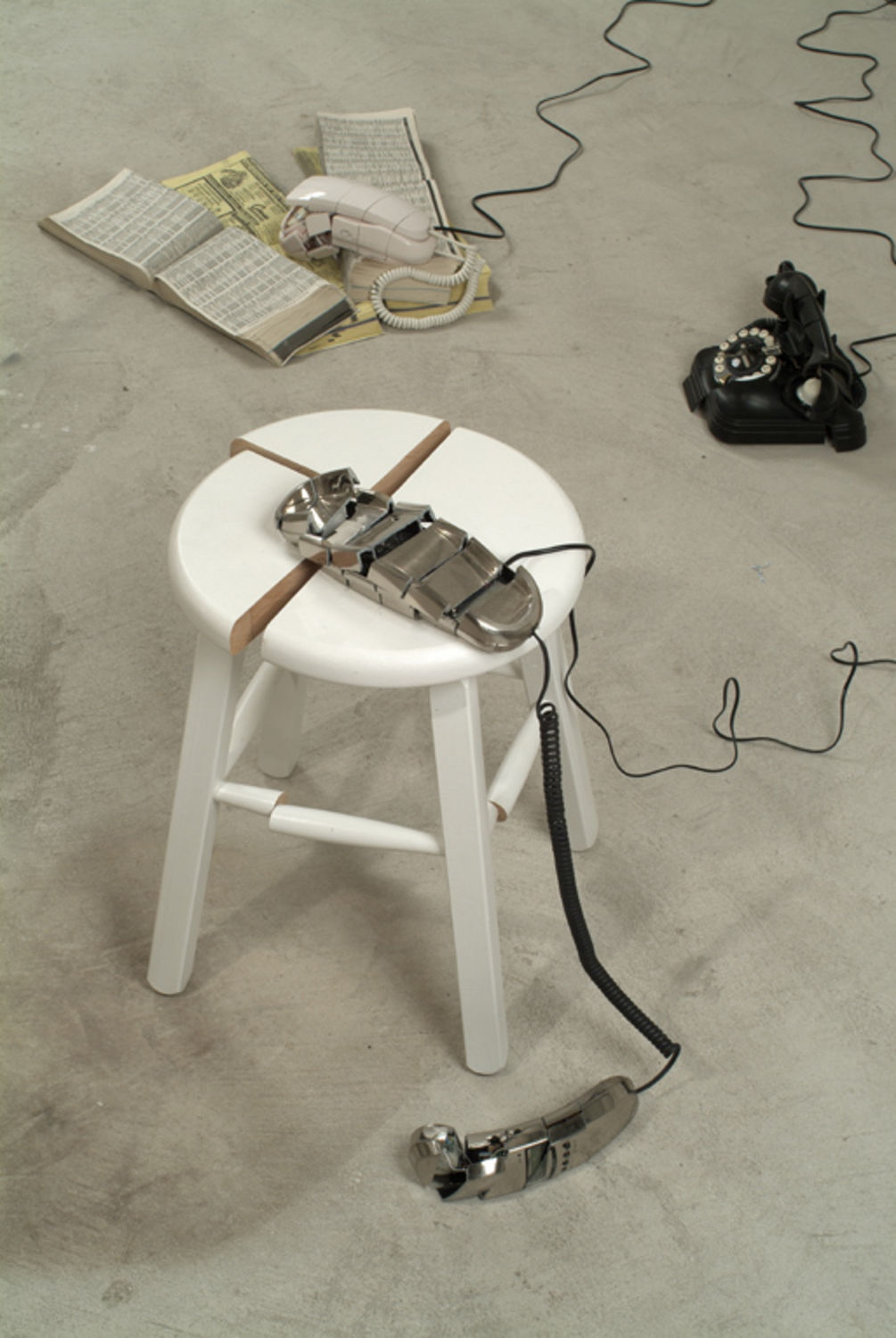
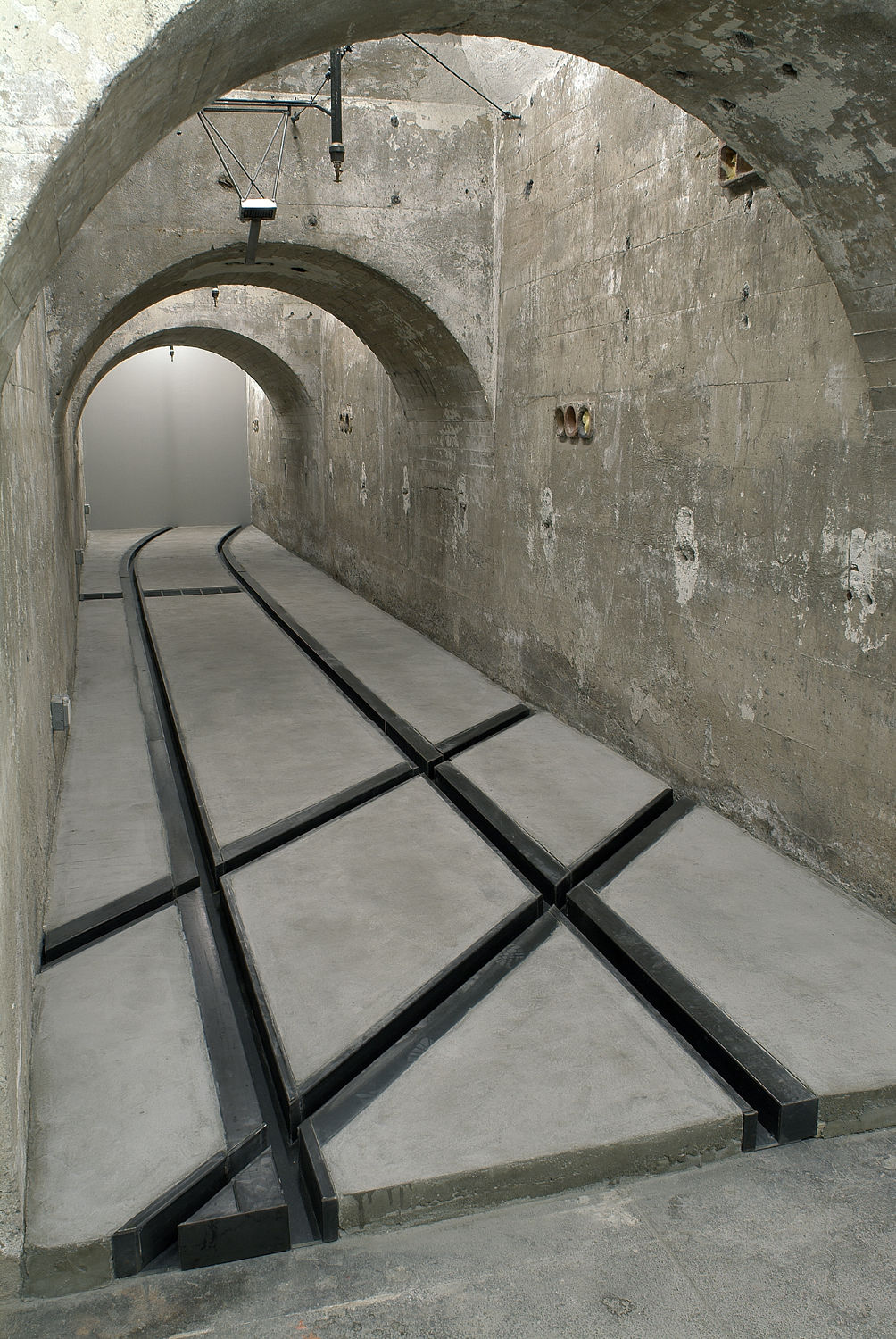
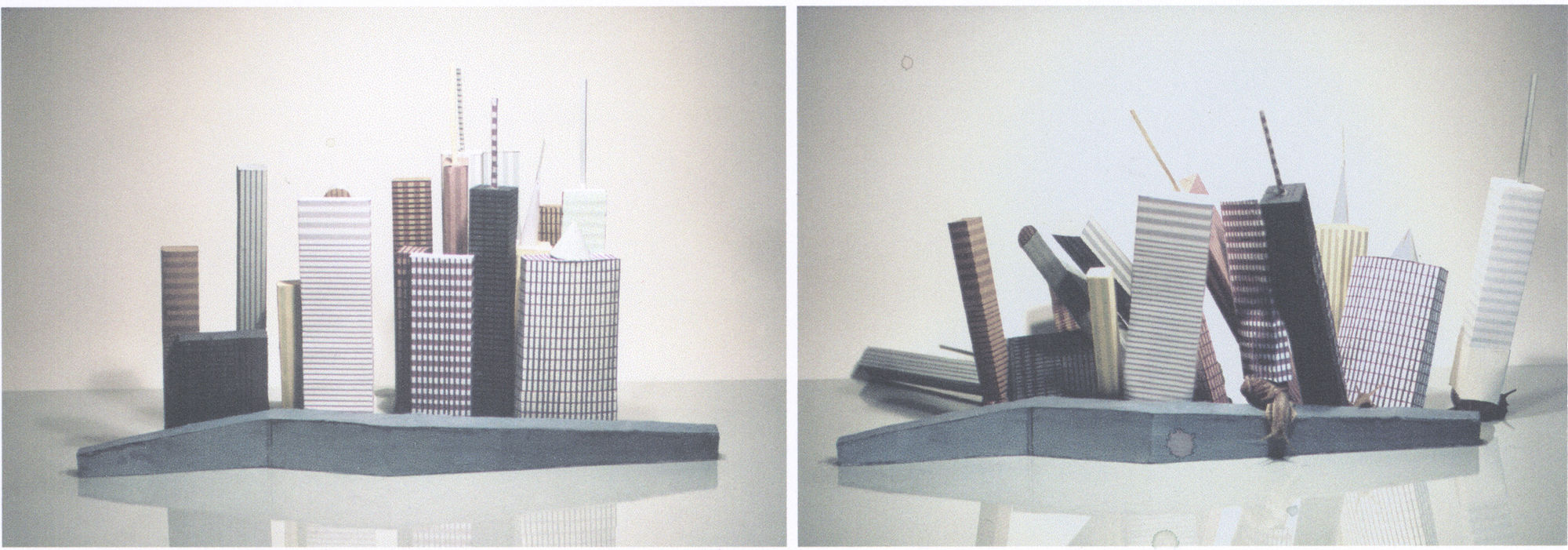
Isidro Blasco, Thinking About That Place (The Full Room), 2004. Photos, wood, video projection, sound.
The works in this exhibition are commissioned through SculptureCenter's In Practice project series, which supports the creation and presentation of innovative work by emerging artists. The projects are selected individually and reflect the diversity of approaches to contemporary sculpture.
Isidro Blasco presents a re-creation of his Manhattan apartment at SculptureCenter. Recognizable from one particular vantage point, the room loses its architectural logic as the viewer moves around to observe it from various points of view. By using light, construction material, photographs, and video, Blasco creates a displaced home away from home, challenging viewers to consider variations in their perceptions of space.
Stephanie Diamond presents an image on the billboard located on SculptureCenter's roof from her series These Are The Men Who Hit On Me On The Street (2002-03). Placed in plain view of the nearby highway, the photograph of a man in his car was taken immediately following his sexually suggestive remarks towards the artist.
Nicolás Dumit Estévez's Toilet Training (2004) is a site-specific audio piece in SculptureCenter's men's and women's restrooms. Spoken by collaborator Rebecca Herman, the recording consists of instructions on the subjects of hygiene, social rules regulating the area, the efficient use of the fixtures, as well as the bathroom's general layout, transforming the space into an object with formal sculptural properties.
Eric Fertman employs a hybridized language of conceptualism, pop, constructivism, and the organic qualities of nature. In the evocative basement space at SculptureCenter, the artist presents dozens of his wood, steel, and plastic forms, transforming the space into a treasure-trove for the unclassifiable, the awkward, and the poetic. Combining the ordinary with the fantastic, his sculptures articulate shapes that seem neither natural nor hand-made, but form a playful dialogue between art and craftsmanship. This is the artist's first public exhibition.
Ana Linnemann creates - or rather, violates - sculptural objects through careful slicing and cutting. In The World as an Orange (2003) Linnemann's sliced objects - shoes, a lamp, a phone, rugs, clocks, a table, umbrellas - are rendered functionless and are arranged in SculptureCenter's basement space to suggest an unraveled domestic space. The drama of the scene is accentuated by her cuts through the gallery wall and her incorporation of the architectural components of the site.
Karyn Olivier invites her viewers into altered spaces that play with dimension, scale and physical access. She has created a new work that references SculptureCenter's history as a trolley repair shop.
Juliane Stiegele's Skyline (2002) is a video showing model-buildings that gradually falter and collapse: the paper buildings are in fact attached to the backs of 42 snails, whose movements defy the artist's intentions and impose an entropic instability onto the man-made miniature skyline.
Karin Waisman presents Patience (1999), an installation of four delicate white paper chairs, onto which the artist has drawn - and then cut out - intricate lacelike patterns. Covering the floor under each full-sized chair are the fragments of paper debris. The glowing vision of fragility, purity, and whiteness contrasts with SculptureCenter's stone hallways, although both share a process of subtle decay.
Ross Knight will create a site-specific sculpture for SculptureCenter's outdoor courtyard. Knight uses simple materials such as aluminum tubing and brightly colored acrylic sheeting in built structures that often appear provisional and somewhat unstable. Scaled in relation to the human body, Knight's sculpture intervenes in the physical space and focuses visitors' experience of the courtyard as both a path and a destination.
Sponsors
SculptureCenter's exhibitions and public programs are supported by The Andy Warhol Foundation for Visual Arts and The Lily Auchincloss Foundation.
